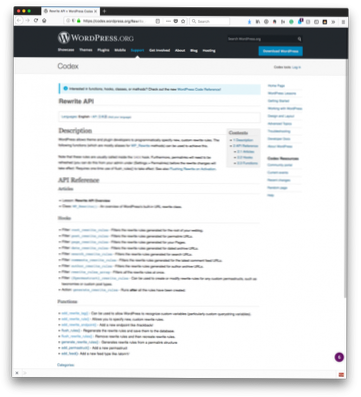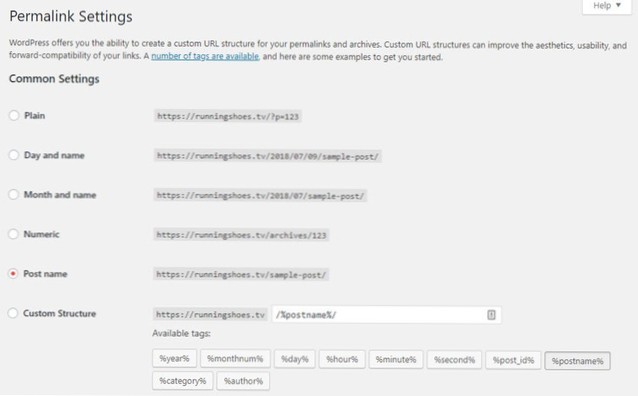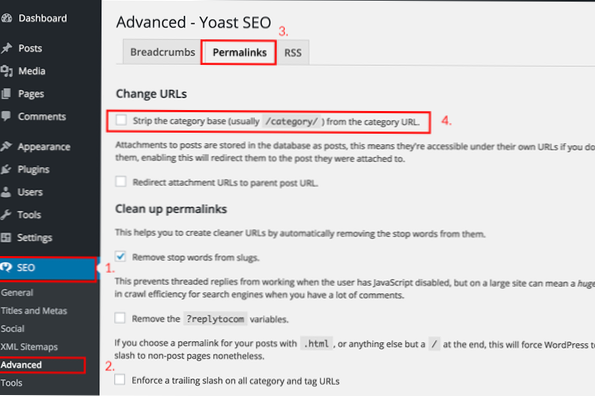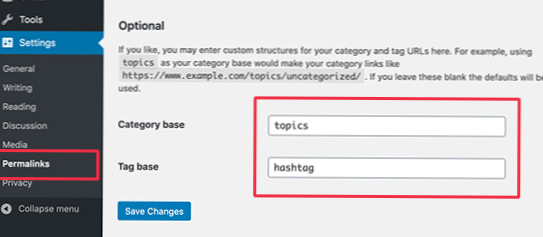- Where do I put rewrite rules in WordPress?
- What are rewrite rules WordPress?
- How do you add a rewrite rule?
- How do I flush rewrite rules in WordPress?
- What are the tools to extend the functionality of WordPress?
- How do I flush permalinks in WordPress?
- How do I change the custom post URL in WordPress?
- How do you rewrite a URL?
- What are the rewrite rules?
- How do I rewrite rules in htaccess?
Where do I put rewrite rules in WordPress?
You can do this pro grammatically, with an activation hook in a plugin, or manually by visiting the Settings > Permalinks page in your WordPress admin and hitting save. The reason the above rewrite rule works is because WordPress recognizes what the p query string key means — it knows to make it to a post id.
What are rewrite rules WordPress?
Rewrite rules are how WordPress creates clean / pretty URIs from URL query parameters. When your new page or blog post automatically gets a human-friendly URL, this is provided by a rewrite rule, which itself is using WordPress's Rewrite API.
How do you add a rewrite rule?
To do this, open the URL Rewrite feature view UI in IIS Manager. Click Add Rule(s)…, and then select the Blank Rule template again. Within the Edit Rule page, enter the following: Name: Redirect from blog (This is a unique name for the rule.)
How do I flush rewrite rules in WordPress?
To flush WordPress rewrite rules or permalinks (usually needs to be done manually for new custom post types) from the Dashboard:
- Step 1: In the main menu find "Settings > Permalinks".
- Step 2: Scroll down if needed and click "Save Changes".
- Step 3: Rewrite rules and permalinks are flushed.
What are the tools to extend the functionality of WordPress?
Toolset is a suite of tools that can help you extend the functionality of WordPress in terms of storing data and publishing them on your website. Its various components give you a visual interface for working with custom post types, custom taxonomies, and custom fields.
How do I flush permalinks in WordPress?
Whenever a new Custom Post is added through a plugin or code; usually WordPress permalinks needs to be flushed.
- Step 1: In the WordPress admin area, go to “Settings > Permalinks”
- Step 2: Click “Save Changes”
- Step 3: Permalinks and rewrite rules are flushed.
How do I change the custom post URL in WordPress?
Changing Custom Post Type Permalinks in WordPress
Upon activation, you need to visit Settings » Permalinks page and scroll down to 'Permalink Settings for Custom Post Types' section. Here you can change the permalink structure of single items in your custom post type.
How do you rewrite a URL?
Use the following checklist to implement URL rewriting.
- Check That It's Supported. Not all Web servers support URL rewriting. ...
- Plan Your Approach. ...
- Create Your Rewrite Rules. ...
- Check Your Pages. ...
- Change Your URLs. ...
- Automatically Redirect Your Old URLs. ...
- Update and Resubmit Your Site Map.
What are the rewrite rules?
: a rule in a grammar which specifies the constituents of a single symbol.
How do I rewrite rules in htaccess?
htaccess rewrite rule includes setting a combination of rewrite condition ( RewriteCond ) tests along with a corresponding rule ( RewriteRule ) if the prior conditions pass. In most cases, these rules should be placed at any point after the RewriteEngine on line in the . htaccess file located in the website's docroot.
 Usbforwindows
Usbforwindows



